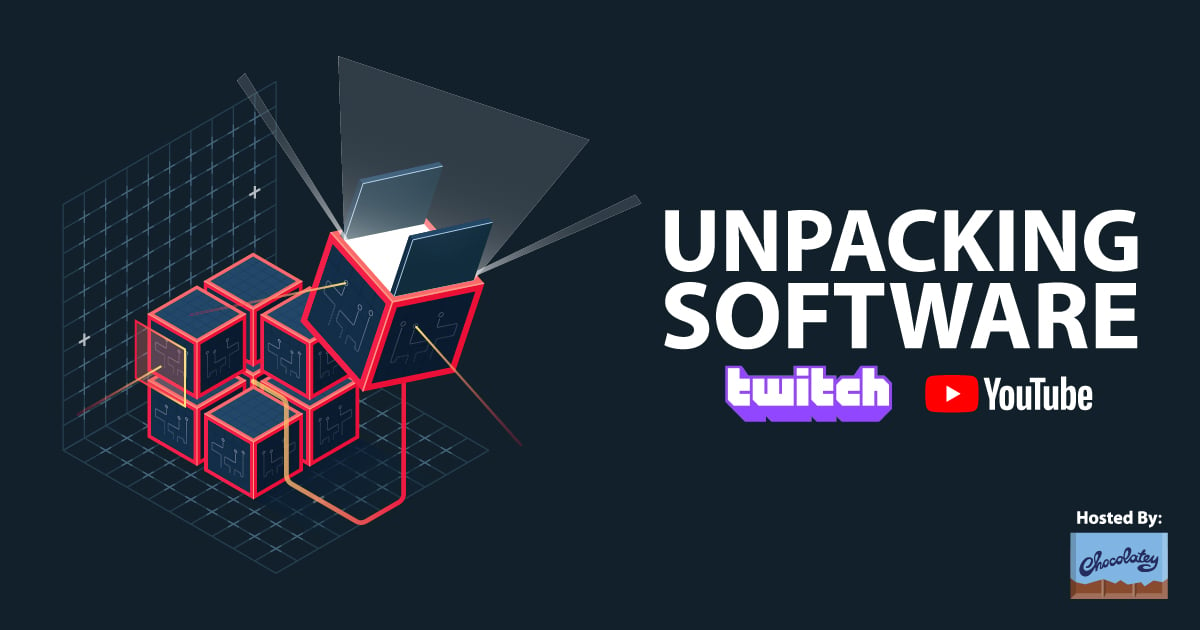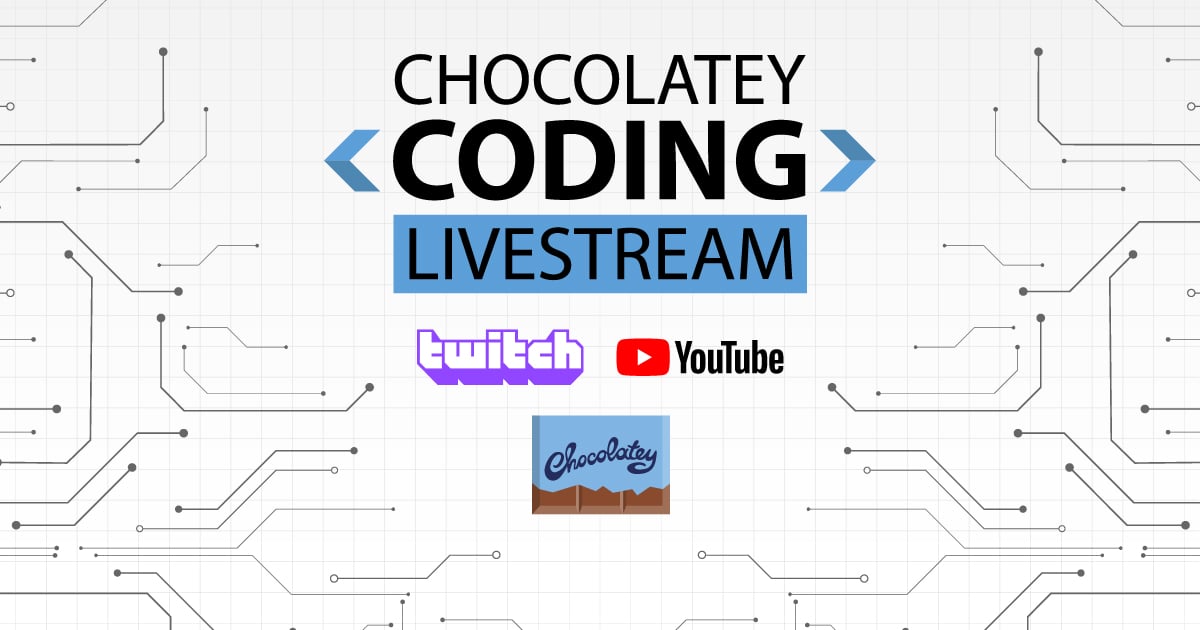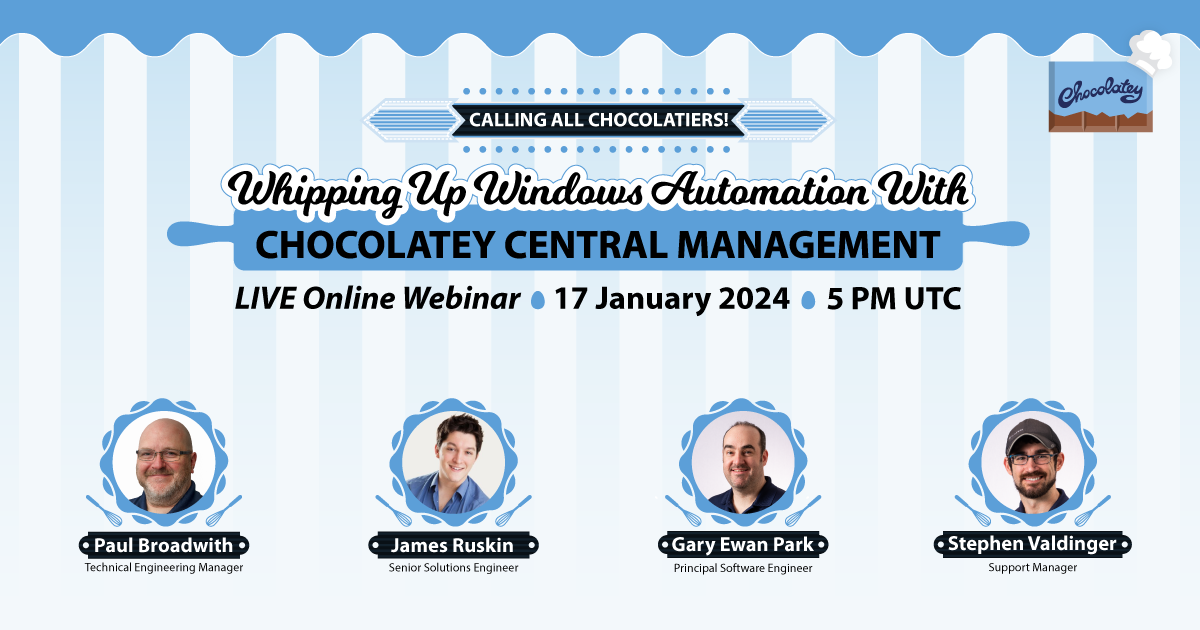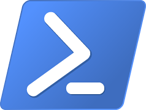
Downloads:
1,005
Downloads of v 0.0.9:
1,005
Last Update:
03 Aug 2015
Package Maintainer(s):
Software Author(s):
- Kir Belevich
Tags:
optimize svg-clean svg svg-cleaner svg-optimiser image-optimiser- Software Specific:
- Software Site
- Software License
- Package Specific:
- Possible Package Source
- Package outdated?
- Package broken?
- Contact Maintainers
- Contact Site Admins
- Software Vendor?
- Report Abuse
- Download
SVGO GUI
- 1
- 2
- 3
0.0.9 | Updated: 03 Aug 2015
- Software Specific:
- Software Site
- Software License
- Package Specific:
- Possible Package Source
- Package outdated?
- Package broken?
- Contact Maintainers
- Contact Site Admins
- Software Vendor?
- Report Abuse
- Download
Downloads:
1,005
Downloads of v 0.0.9:
1,005
Maintainer(s):
Software Author(s):
- Kir Belevich
SVGO GUI 0.0.9
- 1
- 2
- 3
All Checks are Passing
3 Passing Tests
Deployment Method: Individual Install, Upgrade, & Uninstall
To install SVGO GUI, run the following command from the command line or from PowerShell:
To upgrade SVGO GUI, run the following command from the command line or from PowerShell:
To uninstall SVGO GUI, run the following command from the command line or from PowerShell:
Deployment Method:
This applies to both open source and commercial editions of Chocolatey.
1. Enter Your Internal Repository Url
(this should look similar to https://community.chocolatey.org/api/v2/)
2. Setup Your Environment
1. Ensure you are set for organizational deployment
Please see the organizational deployment guide
2. Get the package into your environment
Option 1: Cached Package (Unreliable, Requires Internet - Same As Community)-
Open Source or Commercial:
- Proxy Repository - Create a proxy nuget repository on Nexus, Artifactory Pro, or a proxy Chocolatey repository on ProGet. Point your upstream to https://community.chocolatey.org/api/v2/. Packages cache on first access automatically. Make sure your choco clients are using your proxy repository as a source and NOT the default community repository. See source command for more information.
- You can also just download the package and push it to a repository Download
-
Open Source
-
Download the package:
Download - Follow manual internalization instructions
-
-
Package Internalizer (C4B)
-
Run: (additional options)
choco download svgo-gui --internalize --source=https://community.chocolatey.org/api/v2/ -
For package and dependencies run:
choco push --source="'INTERNAL REPO URL'" - Automate package internalization
-
Run: (additional options)
3. Copy Your Script
choco upgrade svgo-gui -y --source="'INTERNAL REPO URL'" [other options]See options you can pass to upgrade.
See best practices for scripting.
Add this to a PowerShell script or use a Batch script with tools and in places where you are calling directly to Chocolatey. If you are integrating, keep in mind enhanced exit codes.
If you do use a PowerShell script, use the following to ensure bad exit codes are shown as failures:
choco upgrade svgo-gui -y --source="'INTERNAL REPO URL'"
$exitCode = $LASTEXITCODE
Write-Verbose "Exit code was $exitCode"
$validExitCodes = @(0, 1605, 1614, 1641, 3010)
if ($validExitCodes -contains $exitCode) {
Exit 0
}
Exit $exitCode
- name: Install svgo-gui
win_chocolatey:
name: svgo-gui
version: '0.0.9'
source: INTERNAL REPO URL
state: present
See docs at https://docs.ansible.com/ansible/latest/modules/win_chocolatey_module.html.
chocolatey_package 'svgo-gui' do
action :install
source 'INTERNAL REPO URL'
version '0.0.9'
end
See docs at https://docs.chef.io/resource_chocolatey_package.html.
cChocoPackageInstaller svgo-gui
{
Name = "svgo-gui"
Version = "0.0.9"
Source = "INTERNAL REPO URL"
}
Requires cChoco DSC Resource. See docs at https://github.com/chocolatey/cChoco.
package { 'svgo-gui':
ensure => '0.0.9',
provider => 'chocolatey',
source => 'INTERNAL REPO URL',
}
Requires Puppet Chocolatey Provider module. See docs at https://forge.puppet.com/puppetlabs/chocolatey.
4. If applicable - Chocolatey configuration/installation
See infrastructure management matrix for Chocolatey configuration elements and examples.
This package is exempt from moderation. While it is likely safe for you, there is more risk involved.
The svgo-gui app is using the node-webkit app runtime to call the SVGO Nodejs tool in a minimalist and highly intuitive GUI. Working with the svgo-gui app is extremely streamlined: drag and drop the files you want to process on top of the app’s main window, and the utility takes care of the rest.
Within the svgo-gui main window you will see a list with all the processed SVG files, their initial size, the output size, and the how much space has been saved expressed in percents. All the optimization is performed automatically, without requiring any user interaction.
Please Note: This is an automatically updated package. If you find it is out of date by more than a day or two, please contact the maintainer(s) and let them know the package is no longer updating correctly.
. (Join-Path (Split-Path -parent $MyInvocation.MyCommand.Definition) 'helpers\helpers.ps1')
$packageTitle = "SVGO GUI"
$packageName = "svgo-gui"
$binRoot = GetBinRoot
$startMenu = GetMenuStartPath
Remove-Item "$binRoot\$packageName" -Force -Recurse
Remove-Item "$startMenu\Programs\$packageTitle" -Force -Recurse # ====================================================
# GetMenuStartPath
# ====================================================
# Grabs Menu Start location from registry.
#
# @return {string} Menu Start path
# ====================================================
Function GetMenuStartPath(){
return (Get-ItemProperty -Path "Registry::HKEY_CURRENT_USER\SOFTWARE\Microsoft\Windows\CurrentVersion\Explorer\User Shell Folders")."Start Menu"
}
# ====================================================
# GetUninstallString
# ====================================================
# Searches Registry for the uninstall string
#
# @param {string} $programName Regex pattern for full program name, as its referred to in registry
# @param {bool} $trySilent Try checking for silent uninstall string?
# @param {bool} $skipMsi Should MSi be ignored (if EXE takes care of them automatically)
# @return {string} Full uninstall path (no flags)
# ====================================================
Function GetUninstallString{
param(
[string] $programName,
[bool] $trySilent = 0,
[bool] $skipMsi = 0
)
$uninstallType = "UninstallString"
# establish all possible locations for uninstaller to be stored
$local_key = 'HKCU:\Software\Microsoft\Windows\CurrentVersion\Uninstall'
$machine_key32 = 'HKLM:\SOFTWARE\Microsoft\Windows\CurrentVersion\Uninstall'
$machine_key64 = 'HKLM:\SOFTWARE\Wow6432Node\Microsoft\Windows\CurrentVersion\Uninstall'
$reg_locations = @()
if(Test-Path "$local_key"){
$reg_locations += "$local_key\*"
}
if(Test-Path "$machine_key32"){
$reg_locations += "$machine_key32\*"
}
if( ((Get-WmiObject Win32_Processor).AddressWidth -eq 64) -and (Test-Path "$machine_key64") ) {
$reg_locations += "$machine_key64\*"
}
if($trySilent){
$uninstallType = "QuietUninstallString"
}
$uninstallers = ( `
Get-ItemProperty -Path $reg_locations | `
?{ $_.DisplayName -match "$programName" } `
) | `
?{ $_.$uninstallType -ne $null} | `
select -exp $uninstallType -unique
if($skipMsi -eq 1){
$uninstallers = $uninstallers | ?{ $_ -notmatch "^msiexec*"}
}
# find and return the actual uninstaller path
return $uninstallers
}
# ====================================================
# AutoUninstall
# ====================================================
# Tries to autouninstall a package
#
# @param {string} $programName (required) Full program name, as its referred to in registry
# @param {bool} $trySilent (optional) Try checking for silent uninstall string?
# @param {bool} $skipMsi Should MSi be ignored (if EXE takes care of them automatically)
# @param {string} $silentArgs (optional) Additional silent uninstall arguments to
# be added to the ones detected in registry
# @param {object} $ValidExitCodes (optional) Passing exit codes
# @return {void}
# ====================================================
Function AutoUninstall {
param(
[string] $programName,
[bool] $trySilent = 0,
[bool] $skipMsi = 0,
[string] $silentArgs = '',
$validExitCodes = @(0)
)
try {
$uninstallers = GetUninstallString `
-programName $programName `
-trySilent $trySilent `
-skipMsi $skipMsi
# determine the name we're searching for in registry
$uninstallerRegistryQuery = "UninstallString"
if($trySilent -eq 1){
$uninstallerRegistryQuery = "QuietUninstallString"
}
#loop through all returned strings and trigger corresponding uninstaller
if($uninstallers){
ForEach ($uninstaller in $uninstallers) {
$chocoUninst = 1
# define vars for default MSI
if($uninstaller -like "MsiExec.exe /x*"){
$uninstaller = ($uninstaller -replace '^.*?\{(.*?)\}', '{$1}')
$installerType = "msi"
$silentArgs += " /qn"
# define vars for msi with /i flag
}elseif($uninstaller -like "MsiExec.exe /i*"){
$chocoUninst = 0;
$uninstaller = ($uninstaller -replace '^MsiExec.exe ', '')
$silentArgs += " /qn"
# define vars for EXE
}else{
# if there are any flags passed, extract them, otherwise PS/Chocolatey will freak out
if($uninstaller -match '^.*?\.exe\"\s*?\/.*$'){
$silentArgs += ($uninstaller -replace '^.*?\.exe\"\s+(.*?)$', ' $1')
$uninstaller = ($uninstaller -replace '^(.*?\.exe\")\s+.*?$', '$1')
}
$installerType = "exe"
}
# uninstall package
if($chocoUninst -eq 1){
Uninstall-ChocolateyPackage `
-PackageName "$programName" `
-FileType $installerType `
-SilentArgs "$($silentArgs)" `
-File "$($uninstaller)" `
-ValidExitCodes $validExitCodes
}else{
Start-ChocolateyProcessAsAdmin "$($uninstaller)" 'msiexec' -validExitCodes $validExitCodes
}
}
}
} catch {
throw $_.Exception
}
}
# ====================================================
# GetBinRoot
# ====================================================
# Negotiates BinRoot path
#
# @return {string} Full binroot path
# ====================================================
Function GetBinRoot(){
$path = 'C:\tools'
if($env:ChocolateyBinRoot -ne $null){
$path = $env:ChocolateyBinRoot
}
return $path
}
# ====================================================
# KillAsap
# ====================================================
# Kills process as soon as it launches
#
# @param {string} Process Name
# @return {void}
# ====================================================
Function KillAsap([string]$appName){
if($appName -ne $null){
$process = (Get-Process $($appName))
if(!$process){
start-sleep -m 250
KillAsap $appName
}else{
$process | Stop-Process -force
}
}
}
# ====================================================
# Import-Certificate
# ====================================================
# Function to import security certificates.
# NOTE: To get a list of available store names, run the following command:
# dir cert: | Select -Expand StoreNames
#
# Example Usages:
# Import-Certificate -CertFile "VeriSign_Expires-2028.08.01.cer" -StoreNames AuthRoot, Root -LocalMachine
# Import-Certificate -CertFile "VeriSign_Expires-2018.05.18.p12" -StoreNames AuthRoot -LocalMachine -CurrentUser -CertPassword Password -Verbose
# dir -Path C:\Certs -Filter *.cer | Import-Certificate -CertFile $_ -StoreNames AuthRoot, Root -LocalMachine -Verbose
#
# @src http://poshcode.org/3518
# @depends Powershell 2+
#
# @param {string} $CertFile Full path to .crt file
# @param {list} $StoreNames Comma separated list of strings corresponding to Crtificate shops:
# SmartCardRoot | UserDS | AuthRoot | CA | Trust | Disallowed | My |
# Root | TrustedPeople | TrustedPublisher
# @param {bool} $LocalMachine Using the local machine certificate store to import the certificate
# @param {bool} $CurrentUser Using the current user certificate store to import the certificate
# @param {string} $CertPassword The password which may be used to protect the certificate file
# @param {bool} $Verbose Spit out stuff
# @return {string} Full uninstall path (no flags)
# ====================================================
# Function to import security certificates.
# http://poshcode.org/3518
# NOTE: To get a list of available store names, run the following command:
# dir cert: | Select -Expand StoreNames
#
Function Import-Certificate{
param
(
[IO.FileInfo] $CertFile = $(throw "Paramerter -CertFile [System.IO.FileInfo] is required."),
[string[]] $StoreNames = $(throw "Paramerter -StoreNames [System.String] is required."),
[switch] $LocalMachine,
[switch] $CurrentUser,
[string] $CertPassword,
[switch] $Verbose
)
begin
{
[void][System.Reflection.Assembly]::LoadWithPartialName("System.Security")
}
process
{
if ($Verbose)
{
$VerbosePreference = 'Continue'
}
if (-not $LocalMachine -and -not $CurrentUser)
{
Write-Warning "One or both of the following parameters are required: '-LocalMachine' '-CurrentUser'. Skipping certificate '$CertFile'."
}
try
{
if ($_)
{
$certfile = $_
}
$cert = New-Object System.Security.Cryptography.X509Certificates.X509Certificate2 $certfile,$CertPassword
}
catch
{
Write-Error ("Error importing '$certfile': $_ .") -ErrorAction:Continue
}
if ($cert -and $LocalMachine)
{
$StoreScope = "LocalMachine"
$StoreNames | ForEach-Object {
$StoreName = $_
if (Test-Path "cert:\$StoreScope\$StoreName")
{
try
{
$store = New-Object System.Security.Cryptography.X509Certificates.X509Store $StoreName, $StoreScope
$store.Open([System.Security.Cryptography.X509Certificates.OpenFlags]::ReadWrite)
$store.Add($cert)
$store.Close()
Write-Verbose "Successfully added '$certfile' to 'cert:\$StoreScope\$StoreName'."
}
catch
{
Write-Error ("Error adding '$certfile' to 'cert:\$StoreScope\$StoreName': $_ .") -ErrorAction:Continue
}
}
else
{
Write-Warning "Certificate store '$StoreName' does not exist. Skipping..."
}
}
}
if ($cert -and $CurrentUser)
{
$StoreScope = "CurrentUser"
$StoreNames | ForEach-Object {
$StoreName = $_
if (Test-Path "cert:\$StoreScope\$StoreName")
{
try
{
$store = New-Object System.Security.Cryptography.X509Certificates.X509Store $StoreName, $StoreScope
$store.Open([System.Security.Cryptography.X509Certificates.OpenFlags]::ReadWrite)
$store.Add($cert)
$store.Close()
Write-Verbose "Successfully added '$certfile' to 'cert:\$StoreScope\$StoreName'."
}
catch
{
Write-Error ("Error adding '$certfile' to 'cert:\$StoreScope\$StoreName': $_ .") -ErrorAction:Continue
}
}
else
{
Write-Warning "Certificate store '$StoreName' does not exist. Skipping..."
}
}
}
}
end
{ }
} # Chocolatey Helpers
set of Powershell helpers to be used for creating [Chocolatey](https://chocolatey.org/) packages.
To be used as submodules, rather than standalone.Log in or click on link to see number of positives.
- svgo-gui.0.0.9.nupkg (60d84b3ddbe0) - ## / 56
- svgo-guiInstall.zip (659d7a59721f) - ## / 55
In cases where actual malware is found, the packages are subject to removal. Software sometimes has false positives. Moderators do not necessarily validate the safety of the underlying software, only that a package retrieves software from the official distribution point and/or validate embedded software against official distribution point (where distribution rights allow redistribution).
Chocolatey Pro provides runtime protection from possible malware.
Copyright © 2012 Kir Belevich
This package has no dependencies.
Ground Rules:
- This discussion is only about SVGO GUI and the SVGO GUI package. If you have feedback for Chocolatey, please contact the Google Group.
- This discussion will carry over multiple versions. If you have a comment about a particular version, please note that in your comments.
- The maintainers of this Chocolatey Package will be notified about new comments that are posted to this Disqus thread, however, it is NOT a guarantee that you will get a response. If you do not hear back from the maintainers after posting a message below, please follow up by using the link on the left side of this page or follow this link to contact maintainers. If you still hear nothing back, please follow the package triage process.
- Tell us what you love about the package or SVGO GUI, or tell us what needs improvement.
- Share your experiences with the package, or extra configuration or gotchas that you've found.
- If you use a url, the comment will be flagged for moderation until you've been whitelisted. Disqus moderated comments are approved on a weekly schedule if not sooner. It could take between 1-5 days for your comment to show up.









 Ansible
Ansible

 PS DSC
PS DSC
